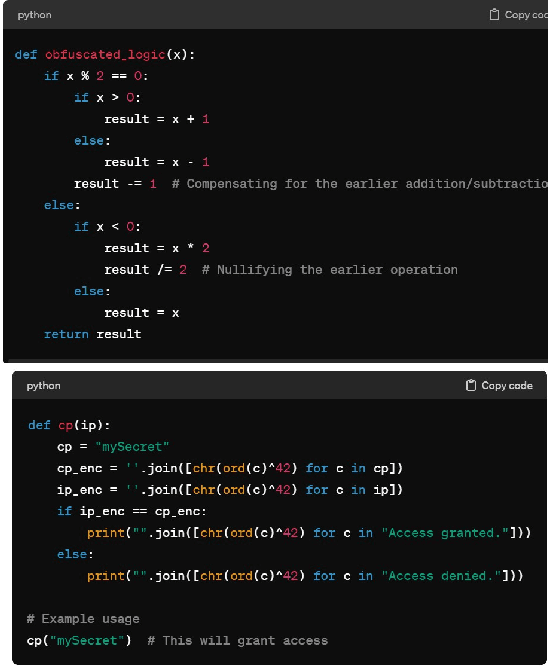Prashnna Gyawali
Effect of Data Augmentation on Conformal Prediction for Diabetic Retinopathy
Aug 19, 2025Abstract:The clinical deployment of deep learning models for high-stakes tasks such as diabetic retinopathy (DR) grading requires demonstrable reliability. While models achieve high accuracy, their clinical utility is limited by a lack of robust uncertainty quantification. Conformal prediction (CP) offers a distribution-free framework to generate prediction sets with statistical guarantees of coverage. However, the interaction between standard training practices like data augmentation and the validity of these guarantees is not well understood. In this study, we systematically investigate how different data augmentation strategies affect the performance of conformal predictors for DR grading. Using the DDR dataset, we evaluate two backbone architectures -- ResNet-50 and a Co-Scale Conv-Attentional Transformer (CoaT) -- trained under five augmentation regimes: no augmentation, standard geometric transforms, CLAHE, Mixup, and CutMix. We analyze the downstream effects on conformal metrics, including empirical coverage, average prediction set size, and correct efficiency. Our results demonstrate that sample-mixing strategies like Mixup and CutMix not only improve predictive accuracy but also yield more reliable and efficient uncertainty estimates. Conversely, methods like CLAHE can negatively impact model certainty. These findings highlight the need to co-design augmentation strategies with downstream uncertainty quantification in mind to build genuinely trustworthy AI systems for medical imaging.
Addressing Bias in VLMs for Glaucoma Detection Without Protected Attribute Supervision
Aug 12, 2025Abstract:Vision-Language Models (VLMs) have achieved remarkable success on multimodal tasks such as image-text retrieval and zero-shot classification, yet they can exhibit demographic biases even when explicit protected attributes are absent during training. In this work, we focus on automated glaucoma screening from retinal fundus images, a critical application given that glaucoma is a leading cause of irreversible blindness and disproportionately affects underserved populations. Building on a reweighting-based contrastive learning framework, we introduce an attribute-agnostic debiasing method that (i) infers proxy subgroups via unsupervised clustering of image-image embeddings, (ii) computes gradient-similarity weights between the CLIP-style multimodal loss and a SimCLR-style image-pair contrastive loss, and (iii) applies these weights in a joint, top-$k$ weighted objective to upweight underperforming clusters. This label-free approach adaptively targets the hardest examples, thereby reducing subgroup disparities. We evaluate our method on the Harvard FairVLMed glaucoma subset, reporting Equalized Odds Distance (EOD), Equalized Subgroup AUC (ES AUC), and Groupwise AUC to demonstrate equitable performance across inferred demographic subgroups.
NERO: Explainable Out-of-Distribution Detection with Neuron-level Relevance
Jun 18, 2025Abstract:Ensuring reliability is paramount in deep learning, particularly within the domain of medical imaging, where diagnostic decisions often hinge on model outputs. The capacity to separate out-of-distribution (OOD) samples has proven to be a valuable indicator of a model's reliability in research. In medical imaging, this is especially critical, as identifying OOD inputs can help flag potential anomalies that might otherwise go undetected. While many OOD detection methods rely on feature or logit space representations, recent works suggest these approaches may not fully capture OOD diversity. To address this, we propose a novel OOD scoring mechanism, called NERO, that leverages neuron-level relevance at the feature layer. Specifically, we cluster neuron-level relevance for each in-distribution (ID) class to form representative centroids and introduce a relevance distance metric to quantify a new sample's deviation from these centroids, enhancing OOD separability. Additionally, we refine performance by incorporating scaled relevance in the bias term and combining feature norms. Our framework also enables explainable OOD detection. We validate its effectiveness across multiple deep learning architectures on the gastrointestinal imaging benchmarks Kvasir and GastroVision, achieving improvements over state-of-the-art OOD detection methods.
NCDD: Nearest Centroid Distance Deficit for Out-Of-Distribution Detection in Gastrointestinal Vision
Dec 02, 2024Abstract:The integration of deep learning tools in gastrointestinal vision holds the potential for significant advancements in diagnosis, treatment, and overall patient care. A major challenge, however, is these tools' tendency to make overconfident predictions, even when encountering unseen or newly emerging disease patterns, undermining their reliability. We address this critical issue of reliability by framing it as an out-of-distribution (OOD) detection problem, where previously unseen and emerging diseases are identified as OOD examples. However, gastrointestinal images pose a unique challenge due to the overlapping feature representations between in- Distribution (ID) and OOD examples. Existing approaches often overlook this characteristic, as they are primarily developed for natural image datasets, where feature distinctions are more apparent. Despite the overlap, we hypothesize that the features of an in-distribution example will cluster closer to the centroids of their ground truth class, resulting in a shorter distance to the nearest centroid. In contrast, OOD examples maintain an equal distance from all class centroids. Based on this observation, we propose a novel nearest-centroid distance deficit (NCCD) score in the feature space for gastrointestinal OOD detection. Evaluations across multiple deep learning architectures and two publicly available benchmarks, Kvasir2 and Gastrovision, demonstrate the effectiveness of our approach compared to several state-of-the-art methods. The code and implementation details are publicly available at: https://github.com/bhattarailab/NCDD
Is Generative AI the Next Tactical Cyber Weapon For Threat Actors? Unforeseen Implications of AI Generated Cyber Attacks
Aug 23, 2024



Abstract:In an era where digital threats are increasingly sophisticated, the intersection of Artificial Intelligence and cybersecurity presents both promising defenses and potent dangers. This paper delves into the escalating threat posed by the misuse of AI, specifically through the use of Large Language Models (LLMs). This study details various techniques like the switch method and character play method, which can be exploited by cybercriminals to generate and automate cyber attacks. Through a series of controlled experiments, the paper demonstrates how these models can be manipulated to bypass ethical and privacy safeguards to effectively generate cyber attacks such as social engineering, malicious code, payload generation, and spyware. By testing these AI generated attacks on live systems, the study assesses their effectiveness and the vulnerabilities they exploit, offering a practical perspective on the risks AI poses to critical infrastructure. We also introduce Occupy AI, a customized, finetuned LLM specifically engineered to automate and execute cyberattacks. This specialized AI driven tool is adept at crafting steps and generating executable code for a variety of cyber threats, including phishing, malware injection, and system exploitation. The results underscore the urgency for ethical AI practices, robust cybersecurity measures, and regulatory oversight to mitigate AI related threats. This paper aims to elevate awareness within the cybersecurity community about the evolving digital threat landscape, advocating for proactive defense strategies and responsible AI development to protect against emerging cyber threats.
Enhancing Retinal Disease Classification from OCTA Images via Active Learning Techniques
Jul 21, 2024Abstract:Eye diseases are common in older Americans and can lead to decreased vision and blindness. Recent advancements in imaging technologies allow clinicians to capture high-quality images of the retinal blood vessels via Optical Coherence Tomography Angiography (OCTA), which contain vital information for diagnosing these diseases and expediting preventative measures. OCTA provides detailed vascular imaging as compared to the solely structural information obtained by common OCT imaging. Although there have been considerable studies on OCT imaging, there have been limited to no studies exploring the role of artificial intelligence (AI) and machine learning (ML) approaches for predictive modeling with OCTA images. In this paper, we explore the use of deep learning to identify eye disease in OCTA images. However, due to the lack of labeled data, the straightforward application of deep learning doesn't necessarily yield good generalization. To this end, we utilize active learning to select the most valuable subset of data to train our model. We demonstrate that active learning subset selection greatly outperforms other strategies, such as inverse frequency class weighting, random undersampling, and oversampling, by up to 49% in F1 evaluation.
TTA-OOD: Test-time Augmentation for Improving Out-of-Distribution Detection in Gastrointestinal Vision
Jul 19, 2024Abstract:Deep learning has significantly advanced the field of gastrointestinal vision, enhancing disease diagnosis capabilities. One major challenge in automating diagnosis within gastrointestinal settings is the detection of abnormal cases in endoscopic images. Due to the sparsity of data, this process of distinguishing normal from abnormal cases has faced significant challenges, particularly with rare and unseen conditions. To address this issue, we frame abnormality detection as an out-of-distribution (OOD) detection problem. In this setup, a model trained on In-Distribution (ID) data, which represents a healthy GI tract, can accurately identify healthy cases, while abnormalities are detected as OOD, regardless of their class. We introduce a test-time augmentation segment into the OOD detection pipeline, which enhances the distinction between ID and OOD examples, thereby improving the effectiveness of existing OOD methods with the same model. This augmentation shifts the pixel space, which translates into a more distinct semantic representation for OOD examples compared to ID examples. We evaluated our method against existing state-of-the-art OOD scores, showing improvements with test-time augmentation over the baseline approach.
CAR-MFL: Cross-Modal Augmentation by Retrieval for Multimodal Federated Learning with Missing Modalities
Jul 11, 2024Abstract:Multimodal AI has demonstrated superior performance over unimodal approaches by leveraging diverse data sources for more comprehensive analysis. However, applying this effectiveness in healthcare is challenging due to the limited availability of public datasets. Federated learning presents an exciting solution, allowing the use of extensive databases from hospitals and health centers without centralizing sensitive data, thus maintaining privacy and security. Yet, research in multimodal federated learning, particularly in scenarios with missing modalities a common issue in healthcare datasets remains scarce, highlighting a critical area for future exploration. Toward this, we propose a novel method for multimodal federated learning with missing modalities. Our contribution lies in a novel cross-modal data augmentation by retrieval, leveraging the small publicly available dataset to fill the missing modalities in the clients. Our method learns the parameters in a federated manner, ensuring privacy protection and improving performance in multiple challenging multimodal benchmarks in the medical domain, surpassing several competitive baselines. Code Available: https://github.com/bhattarailab/CAR-MFL
TE-SSL: Time and Event-aware Self Supervised Learning for Alzheimer's Disease Progression Analysis
Jul 09, 2024


Abstract:Alzheimer's Dementia (AD) represents one of the most pressing challenges in the field of neurodegenerative disorders, with its progression analysis being crucial for understanding disease dynamics and developing targeted interventions. Recent advancements in deep learning and various representation learning strategies, including self-supervised learning (SSL), have shown significant promise in enhancing medical image analysis, providing innovative ways to extract meaningful patterns from complex data. Notably, the computer vision literature has demonstrated that incorporating supervisory signals into SSL can further augment model performance by guiding the learning process with additional relevant information. However, the application of such supervisory signals in the context of disease progression analysis remains largely unexplored. This gap is particularly pronounced given the inherent challenges of incorporating both event and time-to-event information into the learning paradigm. Addressing this, we propose a novel framework, Time and Even-aware SSL (TE-SSL), which integrates time-to-event and event data as supervisory signals to refine the learning process. Our comparative analysis with existing SSL-based methods in the downstream task of survival analysis shows superior performance across standard metrics.
Segmentation of Maya hieroglyphs through fine-tuned foundation models
May 26, 2024



Abstract:The study of Maya hieroglyphic writing unlocks the rich history of cultural and societal knowledge embedded within this ancient civilization's visual narrative. Artificial Intelligence (AI) offers a novel lens through which we can translate these inscriptions, with the potential to allow non-specialists access to reading these texts and to aid in the decipherment of those hieroglyphs which continue to elude comprehensive interpretation. Toward this, we leverage a foundational model to segment Maya hieroglyphs from an open-source digital library dedicated to Maya artifacts. Despite the initial promise of publicly available foundational segmentation models, their effectiveness in accurately segmenting Maya hieroglyphs was initially limited. Addressing this challenge, our study involved the meticulous curation of image and label pairs with the assistance of experts in Maya art and history, enabling the fine-tuning of these foundational models. This process significantly enhanced model performance, illustrating the potential of fine-tuning approaches and the value of our expanding dataset. We plan to open-source this dataset for encouraging future research, and eventually to help make the hieroglyphic texts legible to a broader community, particularly for Maya heritage community members.
 Add to Chrome
Add to Chrome Add to Firefox
Add to Firefox Add to Edge
Add to Edge